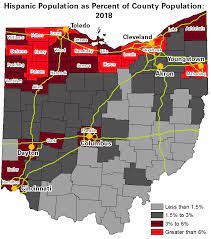
This article was written for The Texas Tribune in January 2023, titled “Texas heat-related deaths reached a two-decade high in 2022 amid extreme temperatures”. This article discusses the rise in heat-related deaths in Texas and how it impacts migrants. It starts by talking about how Taxes has seen an increase in temperatures over the last decade. And with climate change, there will be a growing risk of extreme temperatures. But according to the Texas Department of States Health services, in 2022, there were over 200 heat-related deaths, the highest it’s been since 1999. Around half of the last year’s deaths were Texan residents experiencing homelessness. But the other half was non-residents, someone who is from another state or country. Since they found that most of the deaths are happening along the border counties, it brings into question and suggests that it is primarily migrants who are being affected. They also don’t fully understand the extent of the issue at hand. Because of the influx and the lack of access to the border, many of these deaths are happening in remote areas, and by the time they reach them, they can’t identify the cause of death. These deaths are increasing because of climate change, but it is the policies being implemented. Such as the new title 42 policy and the lack of border crossing infant structure are causing the killings. (Nguyen and Douglas)
The article is primarily pro-migrant and climate change. Throughout the article, Alex and Erin, the authors of this article, discuss the relationship between heat deaths and migrants. Their tone and word choice comes off as blaming the politics, government, and infant structures that are in place. They said such statements as “forced migrants away,” “a dramatic undercount,” and “increasingly remote and dangerous routes” (Nguyen and Douglas). Cupelled with the times that they stated that it is the policies that are in place that are causing these deaths. Then with the support of their quantitate evidence, they show it’s more than just their opinion but facts and statistics to support it. They also thought their article underlines keywords and phrases, which confirms their point. The systems in place and changing climate are dangerously impacting immigrant communities.
This article was powerful because of the quantitative evidence that was included. The report had a lot of numbers and statistics from the Texas Department of State Health Services. Such as, there was “at least 268 heat-related deaths” (Nguyen and Douglas) recorded in 2022. They continued to support their claims with two graphs, one showing how, over the last two decades, there has been an increase in heat-related deaths and that half of those were people who did not live in Texas. The second infographic showed the counties that had the most heat-related death between 1999 and 2022″(Nguyen and Douglas). It showed that “six out of the ten counties were on or near the Texas -Mexico border” (Nguyen and Douglas). The authors’ steps in the article supported it with some quantitative evidence. For example, “Texas also often sees the highest number of recorded migrant deaths among the four states bordering the U.S.-Mexico border” (Nguyen and Douglas). But they then linked the table that shows that information. They did an excellent job of presenting their statistics, making sure we, as the audience, where it was coming from but also allowing us to make our own impetrations. The data was good. It helped me understand the gravity of the issue, and I didn’t feel they were hiding what was going on. I could make my conclusions based on the information that they gave. Overall, the quantitative evidence did an excellent job supporting their opinion and gave the audience a complete picture of what was happening.
The article has less qualitative evidence but still a substantial amount. It mostly comes in the form of quotes from interviews they did with various people. Some of the interviews they did were with advocacy organizations and climate scientists. Some of the most moving statement was one quoted from “Fernando García, executive director of … Border Network for Human Rights”, and they said, “We’re seeing a human rights crisis happening along the border” and “These deaths are by policy” (Nguyen and Douglas). They mostly end the article with qualitative evidence going into further detail about the lack of water, rescue operations for hurt migrants, and how we need more legal pathways for migrants to access the systems, so they are not risking their lives. The article then ends on an impactful note by quoting Brooks County Judge Eric Ramos, “climate change is definitely a killer for these folks … But the inability for our lawmakers in Washington to do their job is also a killer” (Nguyen and Douglas). This evidence helps them grow with a connection and makes them feel about the issue. Overall, I thought the qualitative evidence played its part and helped me understand and feel connected with what is happening with heat-related death and migrants.
Overall, Alex and Erin did an excellent job using both qualitative and quantitative within the article. It helped me understand the implications fully of the impact that rising temperatures and structures in place have on communities. Though this article was biased toward pro-immigrants and climate change, the statistics and graphs that they used supported the points that they were saying. Though an addiction that would have been interesting to see, the contrast is more the other side of the coin. I suggest hearing from a government official or someone who works border control to get their opinion on the issue. The article furthers what we discussed in class about needing more data collection and the implications of undercounting. But it relates to the risk that these people are taking. But it brings in an additional factor that we have yet to focus on, which is climate change’s impact. It’s essential to see on immigration relates to the changing environment and how it’s going to affect the future.
Sources
